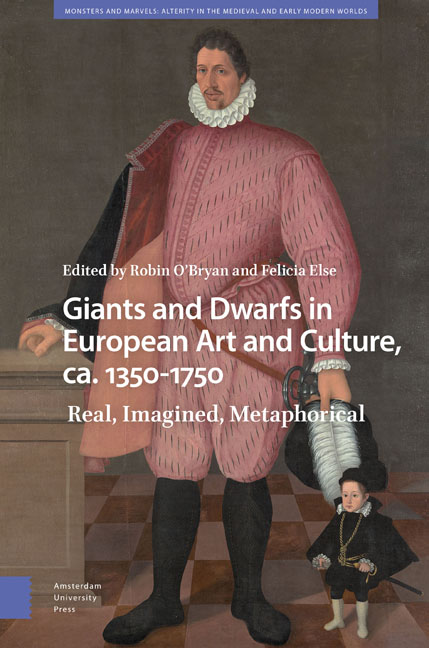8 - A Ducal Dwarf, Military Prowess , and a Portrait in the Farnese Dynastic Collection
Published online by Cambridge University Press: 13 April 2024
Summary
Abstract
A portrait painted by the Flemish artist Johann Gersmueter in 1606 purports to depict “Giangiovetta,” a dwarf associated with the Farnese ducal court in Parma. Arguing that the sitter—who presents as a well-dressed courtier outfitted with martial accouterments—does not appear to be what would be deemed a “proportionate” dwarf, this essay reviews the extant inventory records and the Farnese tradition for court dwarfs to ascertain how and why the figure was determined to be a dwarf. As well as considering the painting in relation to other works of dwarf imagery, the discussion proposes a possible scenario that addresses the sitter's presumed dwarf identity, concluding that the portrait was actually that of a favored military official in ducal employ.
Keywords: proportionate dwarfism, Giangiovetta, Johann Gersmueter, chivalric attributes, Paolo Rinaldi, inventories
A little-known painting formerly in Farnese holdings and now in the Galleria Nazionale in Parma has been identified as the portrait of “Giangiovetta,” a dwarf affiliated with the Farnese ducal court (figure 8.1). The work was executed in 1606 by the Flemish painter Johann Gersmueter, who produced two other portraits around the same time for Ranuccio Farnese, then ruling as duke of Parma and Piacenza (r. 1592–1622). Although precise records pertaining to the commissioning of the “Giangiovetta” portrait are not extant, in an article published in 1992, Giuseppe Bertini traced the work to inventories made in 1641 and 1653 at the Palazzo Farnese in Rome, which cited a “Giovangiovetta” by name. Using the shortened version of the name as it subsequently appeared in the 1680 inventory, Bertini then linked “Giangiovetta” to the dwarf Giovanni Gioietta, referenced in court documents for 1597 and 1599, thus leading him to confirm the identity of the sitter in Gersmueter's painting. The validity—and scholarly acceptance—of this assessment notwithstanding, viewers might be hard-pressed to see in the portrait the figure of a dwarf, much less one who would have been deemed “proportionate.”
Taking Bertini's article as a point of departure, this essay advances a new interpretation of the work known officially as the Ritratto del nano Giangiovetta (Portrait of the Dwarf Giangiovetta).
- Type
- Chapter
- Information
- Giants and Dwarfs in European Art and Culture, c. 1350-1750Real, Imagined, Metaphorical, pp. 273 - 302Publisher: Amsterdam University PressPrint publication year: 2024

